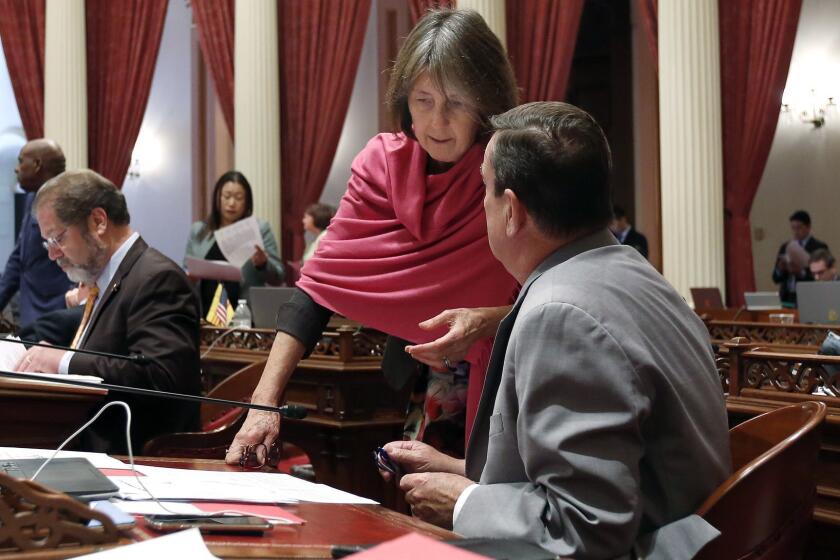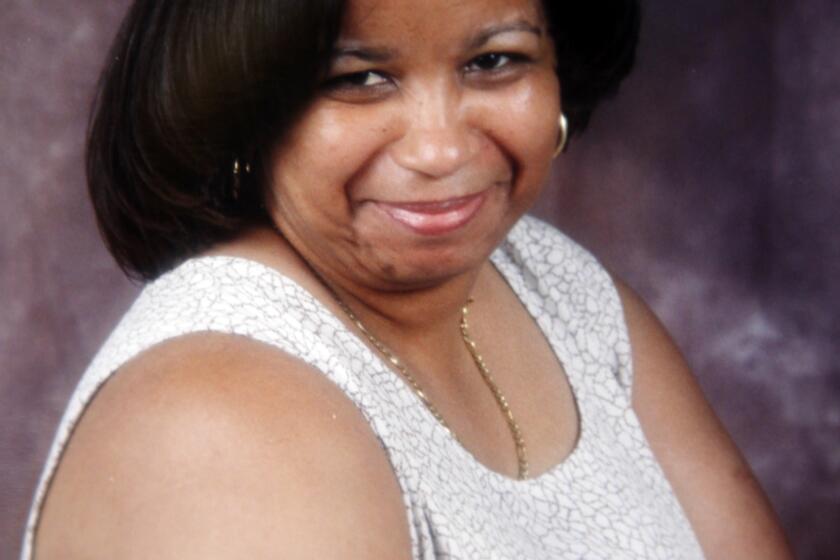How 600-plus California inmates got more than 11,000 years cut off their prison sentences
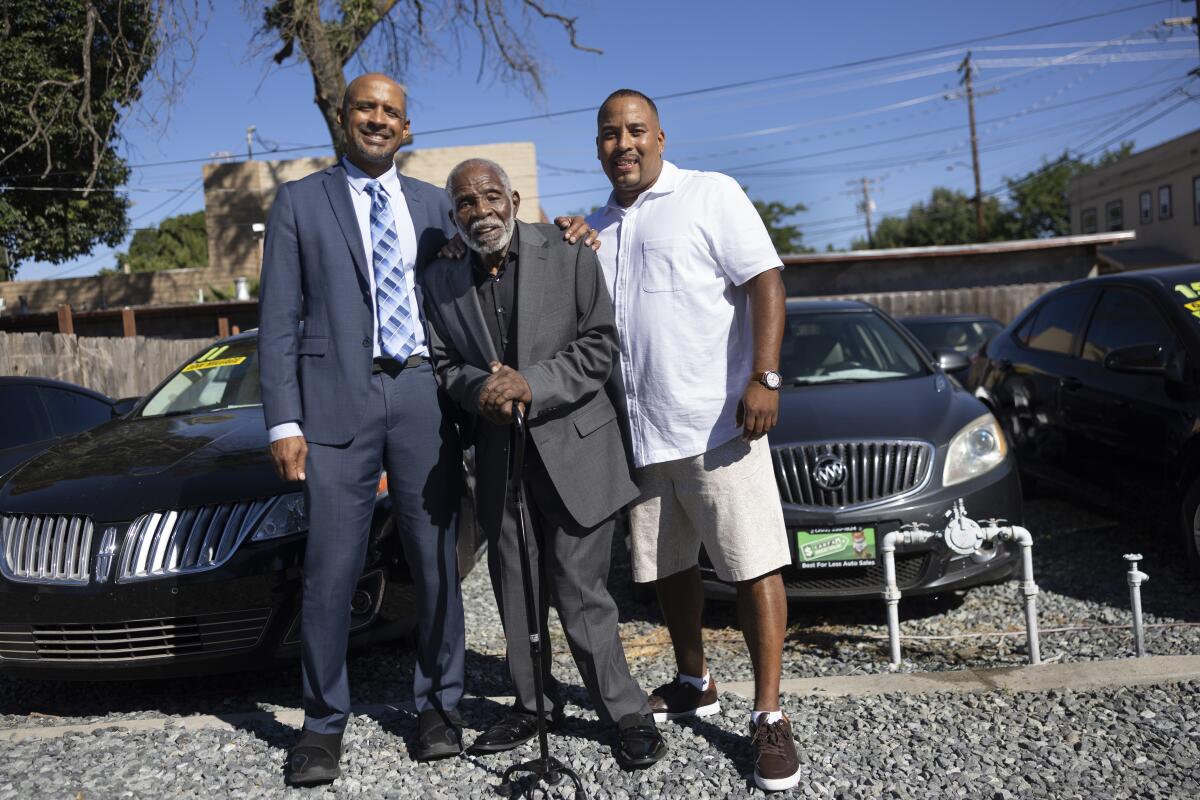
- Share via
Neko Wilson wasn’t present when Gary and Sandra DeBartolo were brutally killed in their Central Valley home in 2009. Still, Fresno County prosecutors alleged he was culpable for their murders because he had helped plan the botched robbery.
At the time, California law allowed for people to be charged with first-degree murder if they were involved in a felony that led to a killing, even if they hadn’t intended for anyone to be hurt and didn’t commit the violence themselves. For years, the felony murder law was used to lock up entire groups of offenders for the violent acts of one or two among them — often for decades, sometimes for life.
Wilson, who was 27 when he and five others were arrested in the DeBartolo murders, faced a similar fate.

“That was the hardest pill to swallow,” Wilson said. “A life sentence for something I didn’t do.”
Wilson, however, walked out of prison in October 2018 — the first of hundreds of state prisoners who have benefited from a pair of criminal justice reform measures that revised the way California punishes unwitting accomplices to killings.
According to a first-of-its-kind analysis by the Office of the State Public Defender, at least 602 people in California detention facilities had their prison sentences reduced between 2019 and 2022 as a result of the two laws. That erased an estimated 11,353 years from their combined terms and saved taxpayers between $94 million and $1.2 billion in prison costs.
“This is really tangible — not only real impact on the individuals who were incarcerated under this sentence, but also their families and the rest of California,” said Sen. Nancy Skinner (D-Berkeley), who sponsored Senate Bill 1437 in the Legislature and worked to ensure inmates were aware of the change after it passed.
SB 1437, signed into law in 2018, and Senate Bill 775, signed into law in 2021, largely restricted the filing of felony murder and other manslaughter and attempted murder charges to people who actually commit or intend to commit a killing, or who are major participants in a related felony and acted with “reckless indifference to human life.”
Certain cases, including those involving the murder of a law enforcement officer, were exempted.
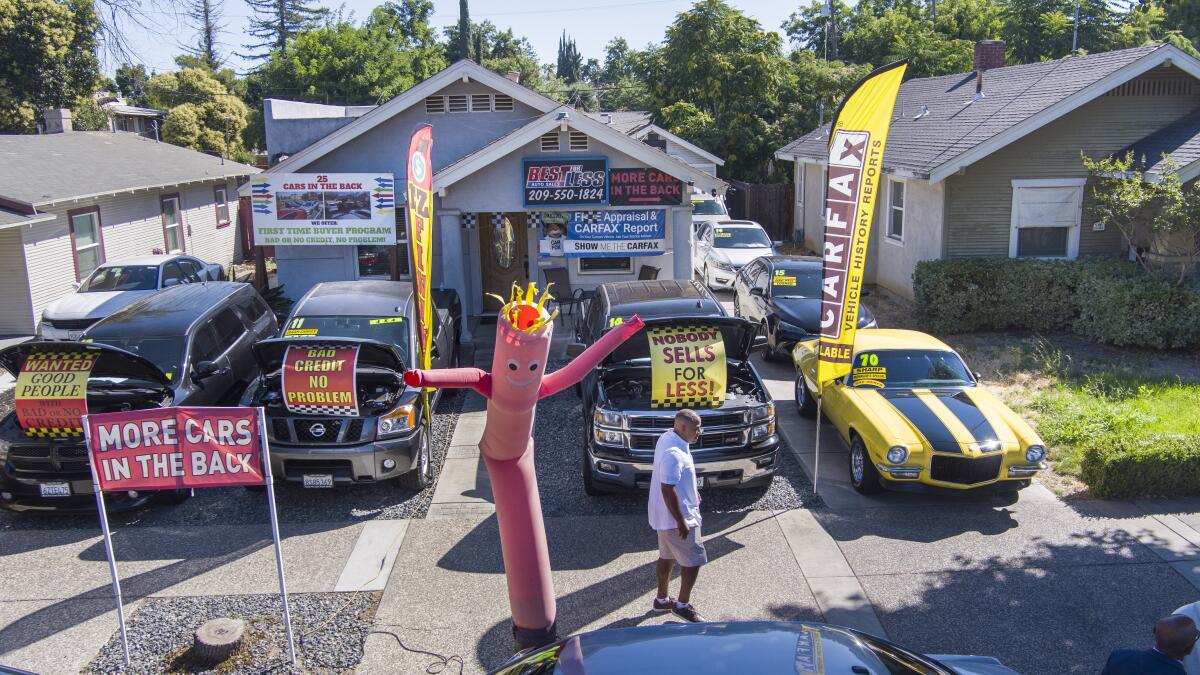
The bills applied retroactively and allowed people behind bars on convictions and plea deals reached under the old rules to be resentenced — usually for lesser crimes — under the new rules.
The bills set off substantial controversy. Advocates said they would save on prison costs, reduce the size of the state’s prison population and restore fairness to California law. Opponents said the laws would remove a critical deterrent to murder, overturn legitimate jury decisions, force prosecutors to relitigate long settled cases and release dangerous prisoners back into the public.
Both sides gave rough estimates for how many people might be released as a result of the changes and over how long of a period. The true numbers would depend on a host of factors, including individual district attorneys’ willingness to go along with inmates’ requests for resentencing or fight them in court.
Some prosecutors did fight, in part by arguing that the laws were unconstitutional. The state’s highest courts rejected that idea, allowing the laws to stand.
A major criticism of the state’s former felony murder law was that it was disproportionately applied to defendants of color. The state analysis, based on data from the California Department of Corrections and Rehabilitation, found that 41% of the resentenced defendants were Black, and 39% were Latino — or, as the state broke them out, 20% Mexican and 19% Hispanic. About 12% were white.

The analysis found that 250 of the defendants, or 41.5%, were in Los Angeles County. Another 69, or 11.5%, were in Alameda County and 52, or 8.6%, were in Orange County.
There were 26 in San Diego County, 25 each in Sacramento and San Bernardino counties, 22 in Santa Clara County, 21 in Riverside County and 20 in San Francisco County. The rest were scattered across the state.
The analysis is almost certainly an undercount of people who were resentenced. Some prosecutors have simply cut deals to release detainees rather than go through the official process of resentencing and releasing them under the two laws, legal observers said.
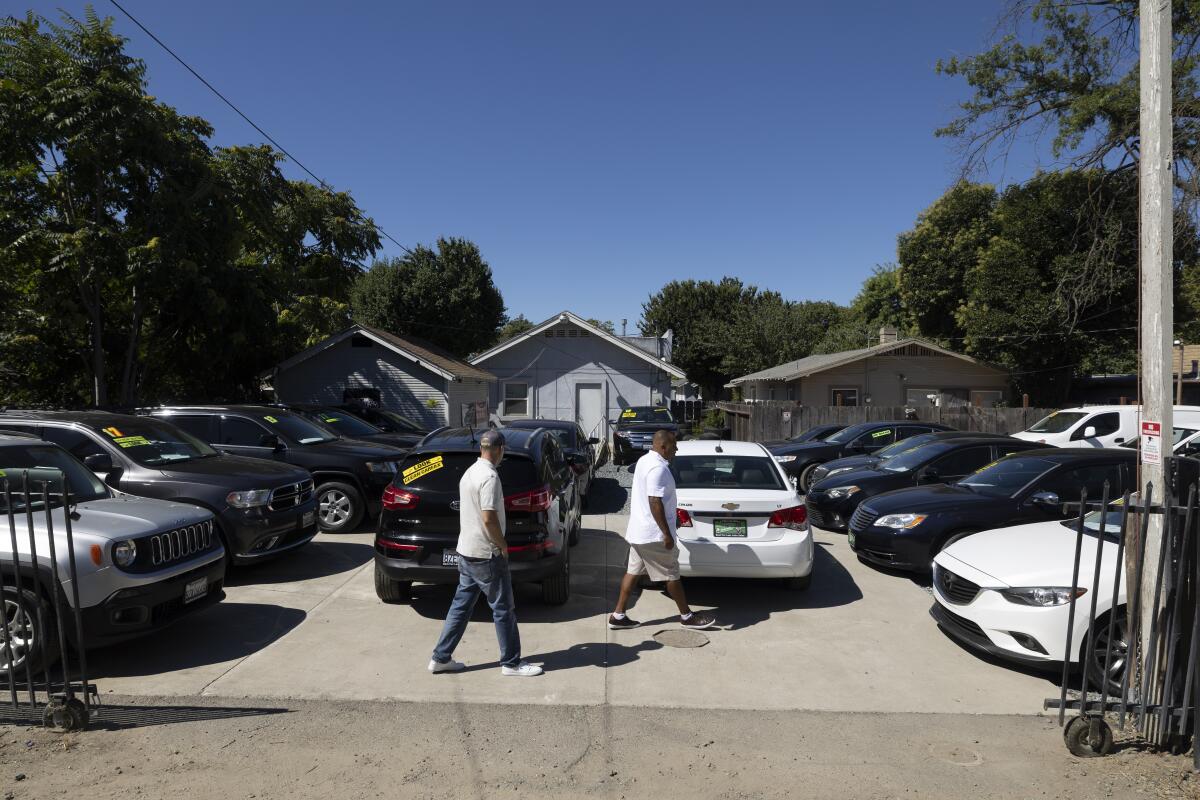
Recidivism among those released was not part of the state’s analysis. However, the Office of the State Public Defender noted that individuals released after long prison terms, like many of those freed under the two laws, tend to reoffend “at a much lower rate than other populations.”
Robert Brown, an assistant district attorney in San Bernardino County, worked with other prosecutors in the state to fight the laws before and after they took effect, and believes they have since let dangerous offenders off the hook.
The laws make it relatively easy for people convicted of felony murder to petition for resentencing, without requiring them to prove they are eligible for such relief. Instead, the legal burden is on prosecutors to prove they are not eligible, Brown said.
That has meant a mountain of new casework for prosecutors — to prove resentencing isn’t deserved because a person had intent to kill or was a reckless, major participant in an underlying felony, Brown said. That work is often complicated or impossible in old cases where key evidence is gone or witnesses have died, or in cases where plea deals were struck and there are no trial transcripts, he said.
“It certainly left us with a less-than-ideal tool belt,” he said.
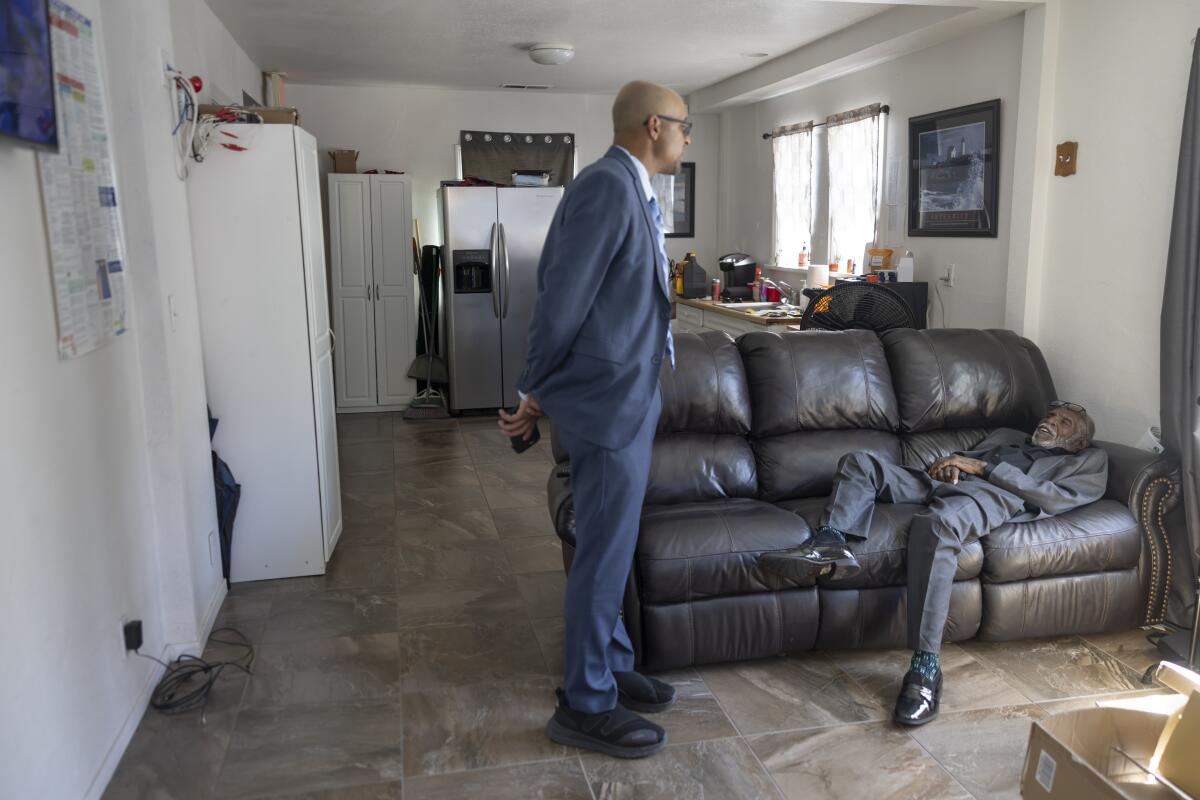
The new laws also leave families of murder victims “blindsided when they are suddenly told that this murder case from 30 years ago is suddenly coming back” and the people locked up for their loved ones’ murders may go free, Brown said.
“The victims really seem to be left out of consideration here,” he said.
Several inmates who have benefited from the law said they are doing well — and grateful to those who helped make it happen.
Patricia Ann Brown — known as Patty Ann Lamoureux when her well-known case was litigated — was arrested in Temecula in 2011 and charged with felony murder in the killing of Bradley Capen.
She was living at the time with her then-boyfriend, Ian Inserra. A friend named Kyle Miller was also staying at their home. Prosecutors allege that one night, Miller and Inserra went to Miller’s family home to rob Capen, who was Miller’s uncle, and that Miller fatally shot Capen.
Although Brown was not there, prosecutors charged her with murder along with the two men, alleging she had helped plan the robbery and gotten rid of the gun afterward. In 2013, a jury convicted her of felony murder and conspiracy to commit robbery, and sentenced her to life without the possibility of parole.
Capen’s family could not be reached for comment.
Brown says she was not part of planning the attack, and had only gotten rid of the gun because Inserra and Miller had hidden it in a tree outside their home, and she was worried Inserra’s young son would find it. When she heard the verdict in her case — guilty of murder — she said she went into shock.
“My ears were ringing and it was like slow motion, and my heart was beating so hard, and I could hardly breathe,” she said.
She eventually resigned herself to spending the rest of her life behind bars, she said. But one day someone slid a piece of paper under her cell door. On it was the language of SB 1437.
“I burst into tears, because I knew at that point that I was going to get to go home,” she said.
Not that it was easy. Prosecutors fought her release, and Brown’s case went to the California Supreme Court — which declined to take it. That left in place a lower appellate court decision that upheld the new law’s constitutionality and found she was eligible for resentencing, in part because the state had failed to establish that she had any intent for someone to be killed.
Brown’s victory helped clear the way for others convicted of felony murder to also go home.
A.J. acted as a decoy in an armed robbery committed by her boyfriend in downtown San Francisco in 2005.
Today, Brown, 57, lives in Encinitas and works as a motel manager. Her family is nearby, and she is engaged to be married.
The joy she felt when she was first released has waned a bit, but she tries to remind herself when times get tough that “it’s a miracle that I’m out,” she said. “I’m just so grateful.”
Neko Wilson said he feels similarly — and he is particularly grateful to his brother.
Jacque Wilson, a San Francisco public defender for the last 20 years, took on his brother’s case. He challenged Fresno County prosecutors’ theories about his brother’s involvement in planning the robbery. He waged prolonged battles over evidence. And he called into question the role of law enforcement agents, who were surveilling the house at the time of the murders based on a tip that it was going to be robbed by an unrelated gang.
According to court records, the DeBartolos had been operating a marijuana grow out of their home in Kerman. Prosecutors alleged Wilson was friends with Gary DeBartolo and had hatched the plan with friends to rob the couple of their cash and drugs.
On the day of the murders, prosecutors alleged, Wilson was in his car alone waiting nearby when his five co-conspirators drove to the DeBartolos’ home and two — Leroy Johnson and Jose Reyes — went inside. They alleged Johnson slit the couple’s throats before he and Reyes fled.
Prosecutors alleged Wilson picked up Reyes, while Johnson got back into the second vehicle. When Gary DeBartolo managed to call 911 before he succumbed to his injuries, the police were there almost immediately. They apprehended Johnson and the three others in the second car after a pursuit. Wilson and Reyes were arrested later.
Wilson always disputed prosecutors’ claims about his involvement. And in part because of his brother’s robust pre-trial defense, he never went to trial. He instead spent nine years in jail while his case was being litigated.
Only after SB 1437 passed did prosecutors give up their murder case against him. Then-Gov. Jerry Brown signed the law in September 2018, and prosecutors cut a deal with Wilson the next month — prior to 1437 even taking effect.
Two defendants accused of playing key roles in a pair of killings that shocked Los Angeles were ordered released this week under the state’s revised felony murder law.
Wilson pleaded guilty to robbery and was released on time served. The three other defendants who were outside at the time of the DeBartolos’ murders have also been released early thanks to the law. Johnson and Reyes remain in custody.
Family of the DeBartolos could not be reached for comment; a spokeswoman for the Fresno district attorney’s office said reaching out to them about the case would be “traumatizing.”
Not long after his release, Wilson was back in custody in Arizona, based on a claim by prosecutors there that he had violated his probation on a nearly two-decades-old marijuana conviction. He would spend another 17 months in jail, without bail, until his brother fought that case too, all the way up to the Arizona Supreme Court.
Today, Wilson, 41, helps run a family car dealership in Modesto. He has rekindled his relationship with his daughter. And he gets to spend time with his elderly father, Mack Wilson — who championed SB 1437 in Sacramento alongside Jacque.
“It’s been amazing,” he said.
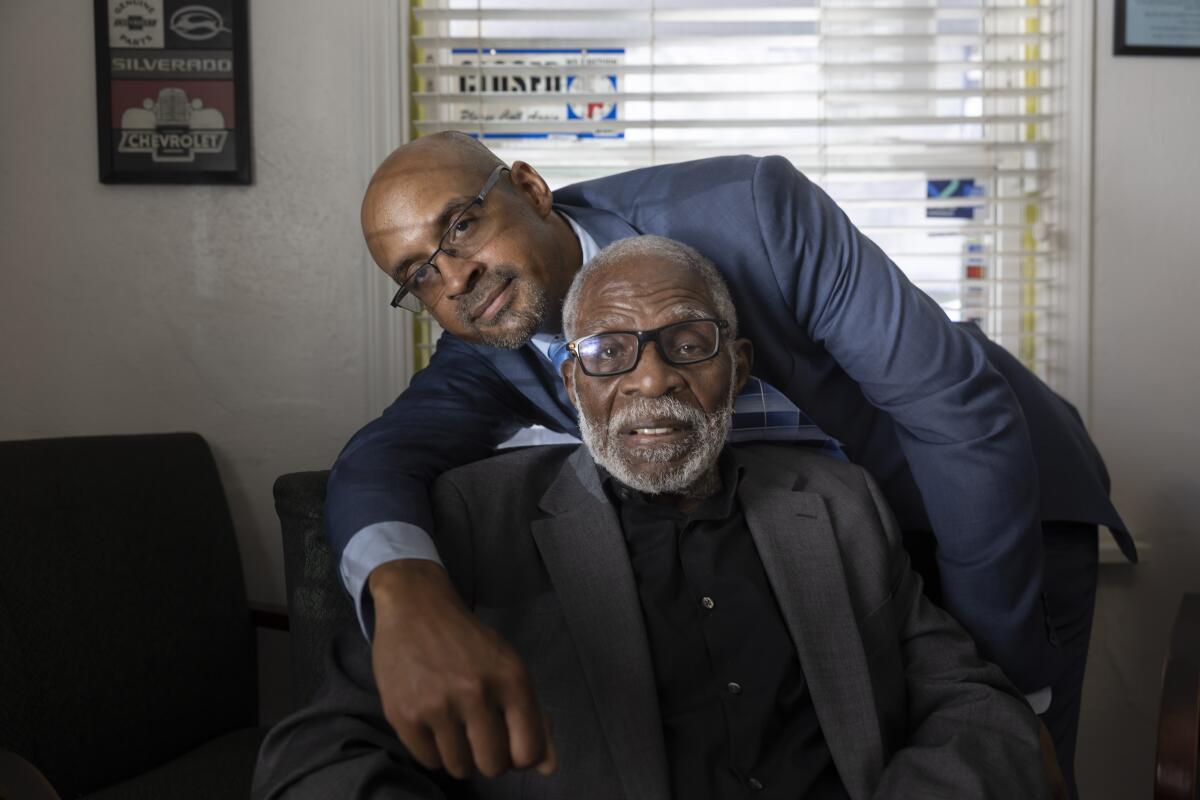
Jacque Wilson called the passage of 1437 a “game changer” not only for his brother, but for so many inmates in California held on similar felony murder charges and convictions.
He recalled complaining about the unfairness of the old felony murder law at one stage in his brother’s case, before SB 1437, and having little success.
“The judge told me, ‘If you don’t like the law go change it.’ That’s what judges always tell attorneys,” he said. “Well guess what? We did.”
More to Read
Sign up for Essential California
The most important California stories and recommendations in your inbox every morning.
You may occasionally receive promotional content from the Los Angeles Times.
